In 2023, the U.S. Department of Energy’s (DOE) Sustainability Performance Office recognized 9 winners and 4 honorable mentions. Congratulations to everyone involved in making these projects successful and impactful!
Learn more about the 2023 DOE Sustainability Award winners below.
Lifetime Achievement awards recognize long-time DOE Sustainability Champions who have dedicated significant amounts of time to making DOE sustainable.
 Mary Sizemore
Mary SizemoreMary Sizemore, Legacy Management
Since 2007, Mary Sizemore played a critical role in the sustainability organization of the Office of Legacy Management. In her current role, she oversees a cross-functional sustainability team of more than 17 federal and 60 contract employees, tackling initiatives related to the management of energy, water, waste, fleet, and ecosystems. With her enthusiasm and leadership, Mary supports LM’s mission to fulfill DOE post-closure responsibilities and ensure the future protection of human health and the environment.
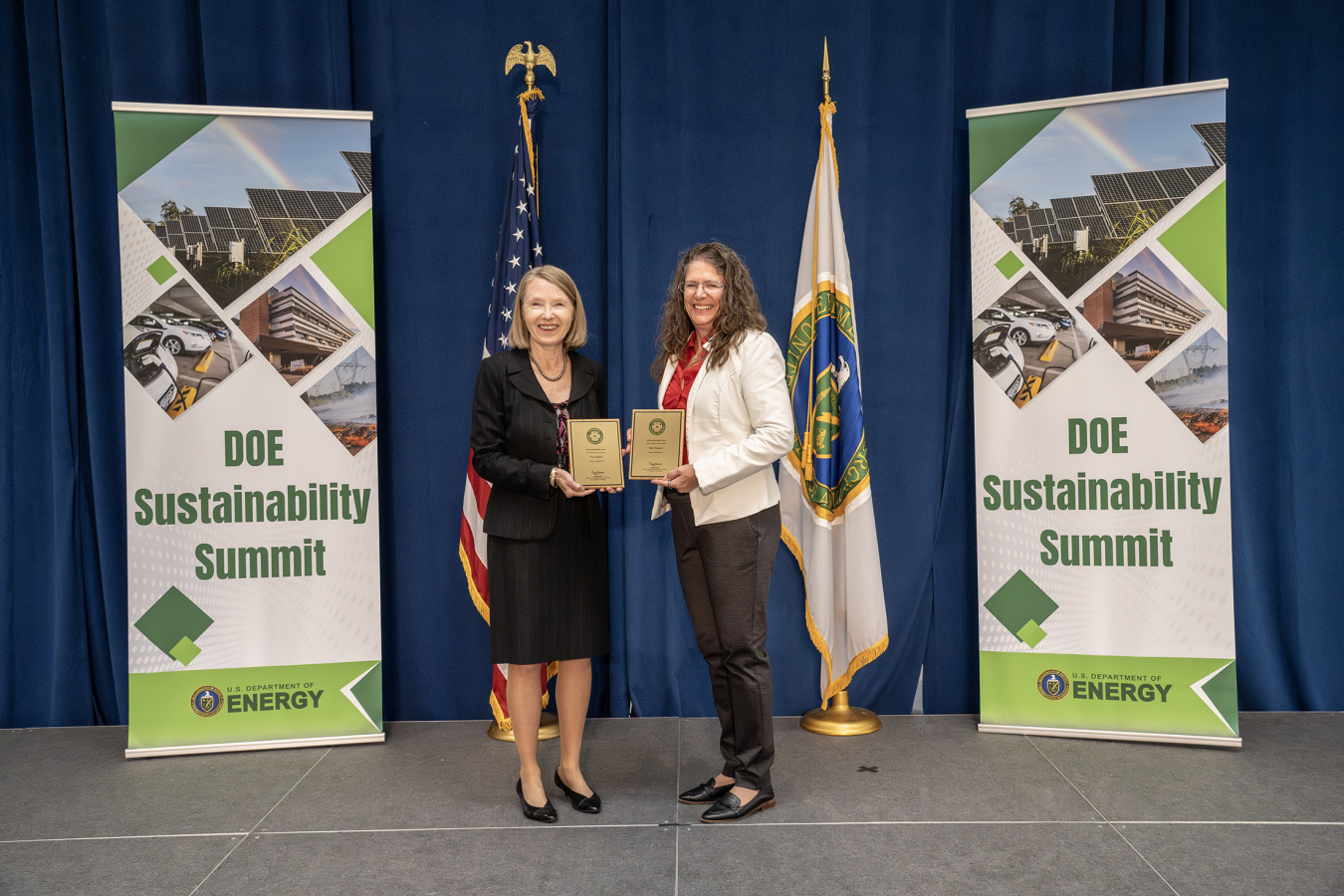 Tracy Ribeiro
Tracy RibeiroTracy Ribeiro, Legacy Management
For the past 16 years, Tracy Ribeiro has advocated for the importance of sustainable and responsible environmental stewardship throughout the Office of Legacy Management. Most recently, she led the development of LM’s first Vulnerability Assessment and Resilience Plan, which included over 65 assessments completed across nine of the ten U.S. climate regions. Tracy also served on the DOE Order 436.1A Integrated Project Team, co-leading the Measurement for Sustainability Performance sub-team. Tracy’s leadership is inclusive and collaborative, as she addresses social, environmental, and economic issues to drive sustainability success at LM.
Sustainability Champions are individuals who advance sustainability goals relating to sustainable buildings, water, waste, sustainable acquisition, and other topic areas.
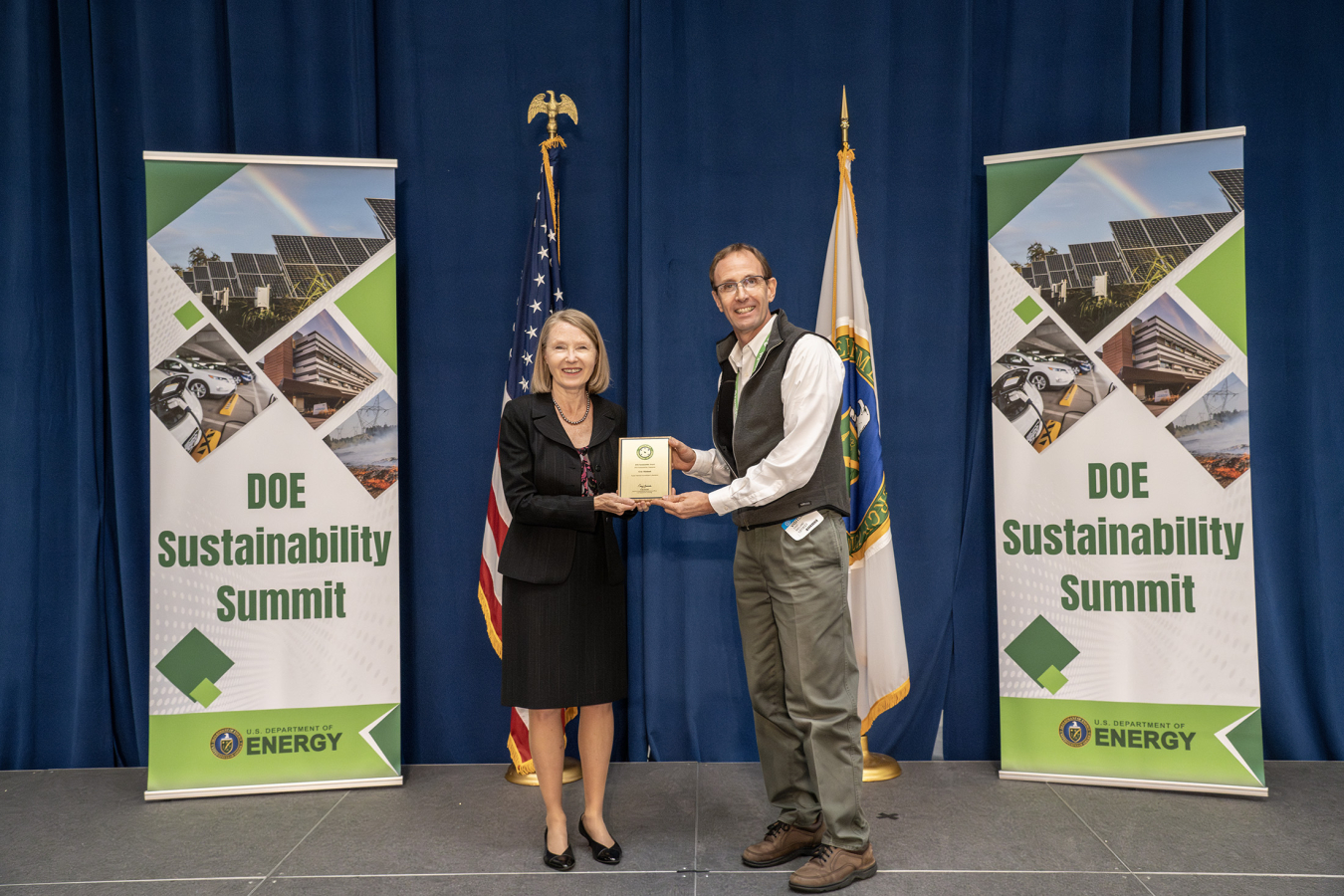 Eric Meiland
Eric MeilandEric Mieland, Fermi National Acceleratory Laboratory
As one of the sustainability pioneers at Fermilab, Eric Meiland has long played an active and pivotal role in building the sustainability culture and program into what it is today. With a “can-do” leadership approach, Eric’s efforts have directly resulted in sustainability goals being incorporated into Fermi’s master plan and sustainability elements being incorporated into all new building and infrastructure replacement projects. A few of Eric’s successes include Fermilab’s Grid Computing Center receiving Energy Star awards over 10 years running, green roofs being installed on the IARC and IERC buildings, installing geothermal heat pumps, building metering projects, reducing waste generation and water use, and Fermilab’s recycling program. His long tenure at the organization, inherent passion for sustainability, and ability to lead others through successful education & strong initiative have fundamentally changed Fermilab for the better.
 Donna Cozart
Donna CozartDonna Cozart, Y-12 National Security Complex – Honorable Mention
For more than 25 years, Donna Cozart has been a sustainability champion at Y-12 National Security Complex, facilitating true behavioral change at the site. Throughout her career, she has expertly managed all types of wastes including hazardous, radioactive, and mixed wastes. She not only is an expert at characterizing waste but has also been influential in determining strategies to reuse or recycle products deemed as waste. In 2022 alone, Donna led the charge in recycling more 4.8 million pounds of materials and diverting over 1,600 metric tons of municipal solid waste and over 2,100 tons of construction and demolition waste.
Outstanding Sustainability Programs or Projects are sustainable programs or projects that reduce costs and increase efficiency.
 Michael Moss and Shannon Blair
Michael Moss and Shannon BlairSulfur Hexafluoride Reduction Initiative, Los Alamos National Laboratory
Sulfur Hexafluoride gas, also known as SF6, is the most potent greenhouse gas that is 22,800 times stronger than CO2. SF6 is used in a variety of mission critical uses throughout Los Alamos National Laboratory, including pulse powered equipment, electrical equipment, and other more unique programmatic uses which make reductions and eliminations an extreme challenge for the institution. Shannon Blair and Michael Moss from LANL rose to the challenge to minimize emissions and reduce costs by implementing several strategies such as calculating the amount of gas being consumed, installing 4 reclamation units for recycling and reuse, and combining partially used canisters to create a closed loop. Thanks to the due diligence of the team at LANL, GHG emissions have been reduced by 10% since 2021.
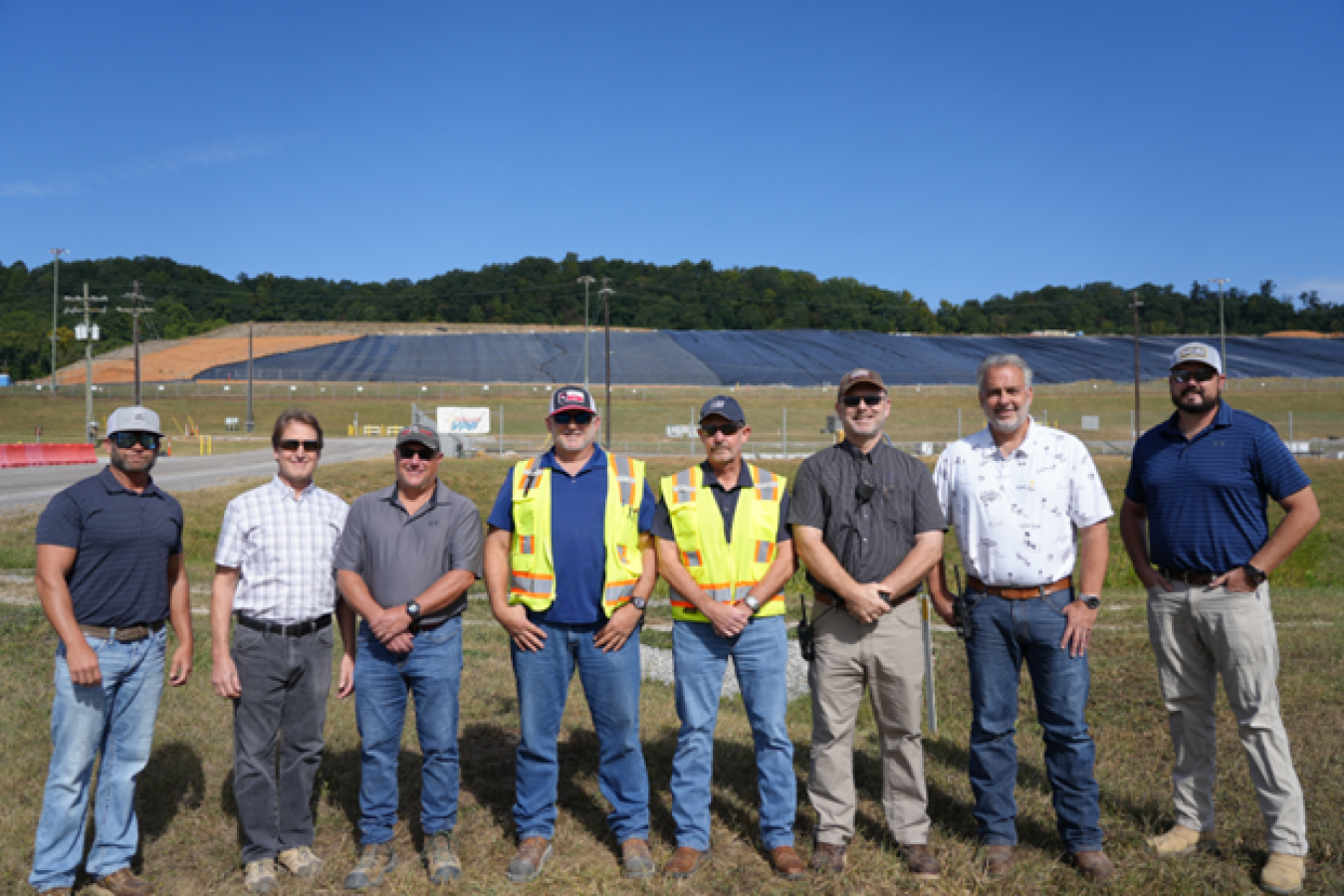 ETTP and UCOR project team
ETTP and UCOR project teamUnited Cleanup Oak Ridge's Innovative Water Management Practices at Environmental Management Waste Management Facility, East Tennessee Technology Park
United Cleanup Oak Ridge LLC implemented an enhanced operational landfill cover, focusing on sustainability and the minimization of waste, at the Environmental Management Waste Management Facility located on the East Tennessee Technology Park on the Oak Ridge Reservation in Tennessee. The landfill’s mission is to provide safe, compliant disposal of approved waste; however, its highest priority is the proper management of landfill wastewater commonly known as leachate. Through aggressive management, innovative waste factory designs and practices, and continuous improvement, United Cleanup Oak Ridge has managed to produce significant benefits. In 2022, these efforts contributed to an increase to the watershed by 1.3 acres and a return of 22.6 million gallons of clean water to the local ecosystem. Over the past decade, nearly 175 million gallons of clean water has been returned to the local ecosystem, equating to cost savings, significant reductions in carbon emissions, reductions in leachate, and reduced active management of contact water.
Paducah Project TeamRaw Water Pump Optimization, Paducah Gaseous Diffusion Plant – Honorable Mention
The Deactivation and Remediation Contractor’s Utilities Optimization Team reduced water consumption across the Paducah site during the current deactivation phase. The team worked with many stakeholders to reduce site water consumption through building deactivation, implementation of space utilization practices, consolidation of employees, and the implementation of efficient technology. This endeavor showcased a strong commitment to enhancing sustainability practices in their operations. Notably, the project demonstrated a noteworthy impact on energy and water efficiency, laying the groundwork for more environmentally responsible practices. The actions of the Deactivation and Remediation Contractor’s Utilities Optimization Team led to a 63% reduction in energy use and will save approximately one million gallons of water each day.
Strategic Partnerships for Sustainability are partnerships between sites or with other organizations that contribute positively to site sustainability.
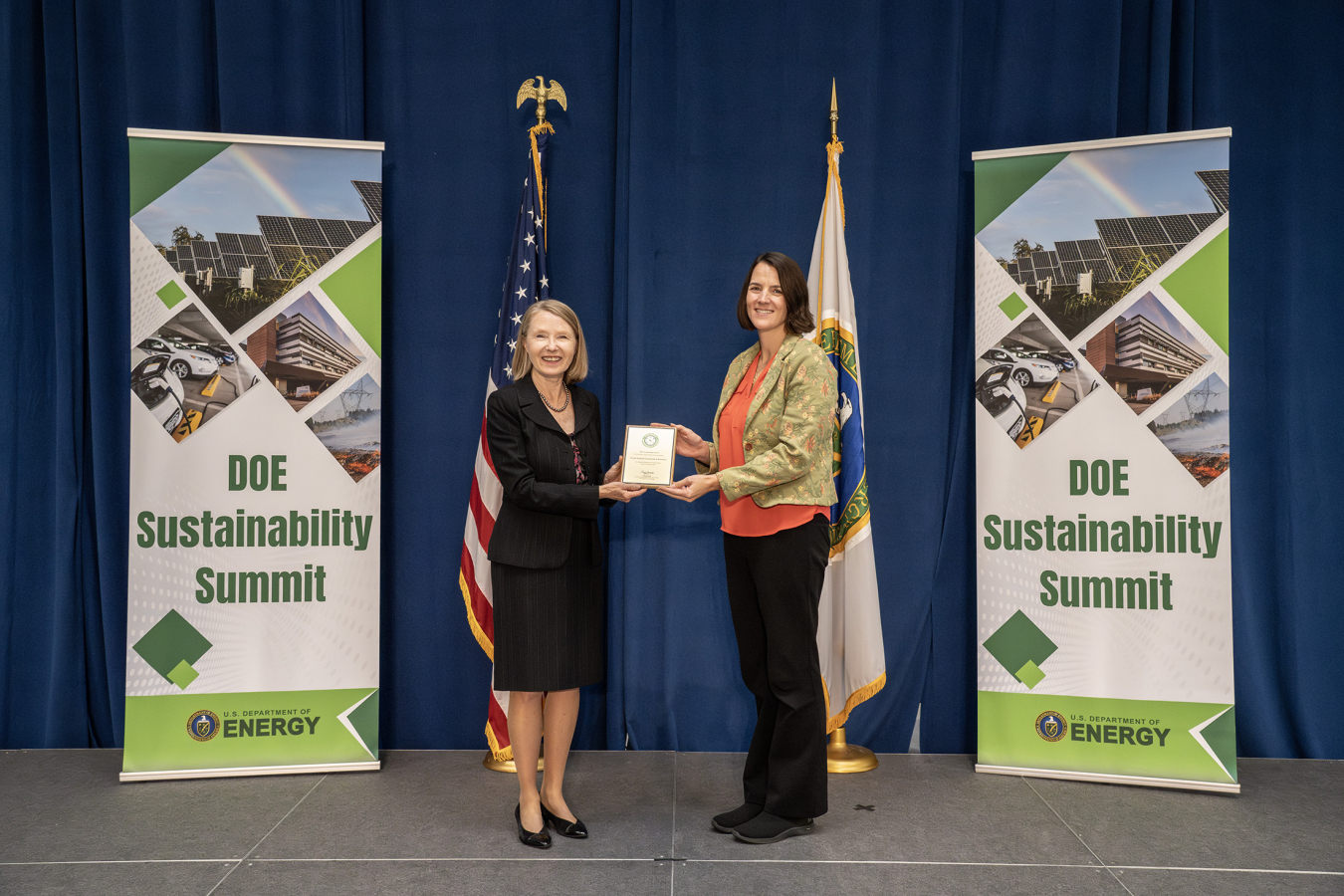 Fermilab National Accelerator Laboratory
Fermilab National Accelerator LaboratoryEcological Management Partnerships Lead to Lasting Impact, Fermilab National Accelerator Laboratory
The Fermilab team dedicated efforts in the management and restoration of the Eola Grassland area. This 600-acre site faced challenges such as invasive non-native grasses and the encroachment of woody species. To address these issues, multiple teams came together to create a comprehensive six-year plan with a primary goal of creating a diverse grassland that serves as an ideal nesting habitat for grassland breeding birds, specifically the grasshopper sparrows and Henslow's sparrows.
Their strategy combines landscape management techniques with monitoring practices to assess the grassland's response and nesting potential. Beyond these primary goals, there are long-term aspirations, including boosting native plant diversity and fostering a better environment for pollinators. The commitment to adaptive management, with the flexibility to adjust strategies based on ecological responses, highlights their dedication to creating the best possible natural area. This collaborative and holistic approach to grassland restoration showcases Fermilab's commitment to environmental stewardship and wildlife conservation, ensuring a more vibrant and sustainable ecosystem for the future.
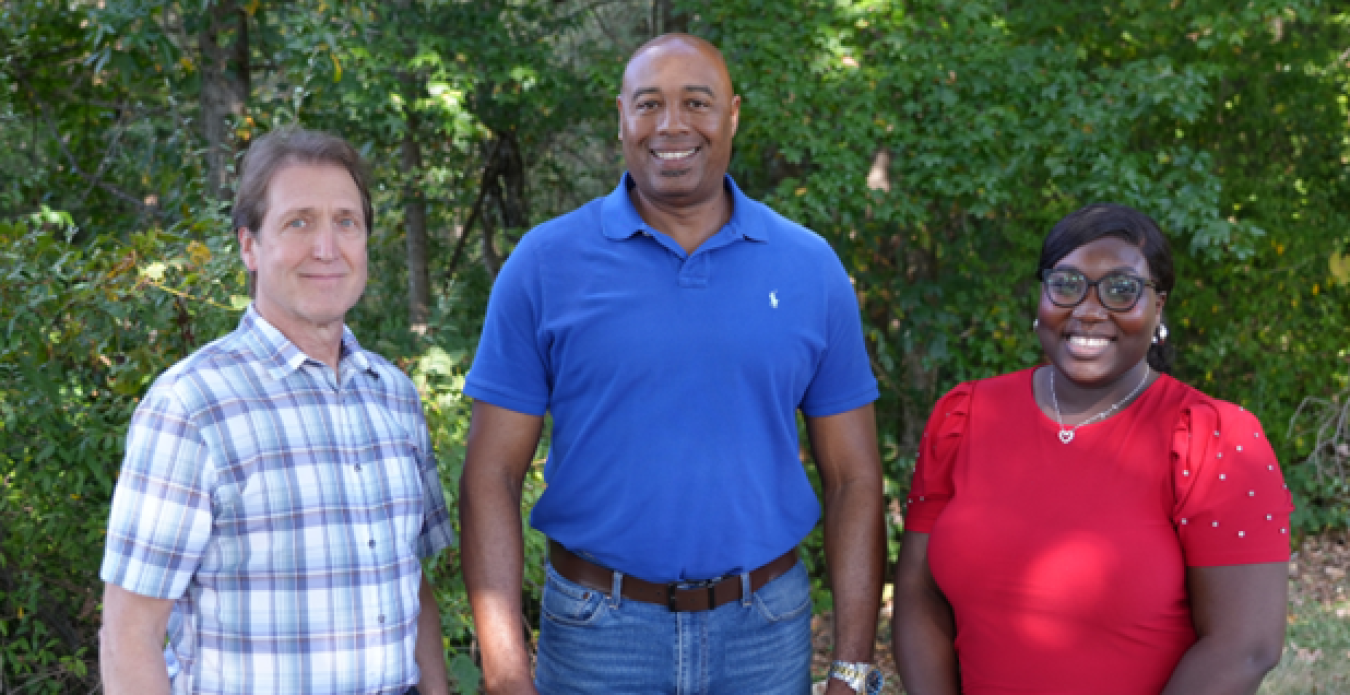 ETTP and UCOR Project Team
ETTP and UCOR Project TeamSustainable Workforce Through Underserved Community Partnerships, East Tennessee Technology Park
United Cleanup Oak Ridge, LLC strategically engaged and partnered with the Scarboro Community, a historic minority community located adjacent to the Oak Ridge Reservation in Tennessee. In August 2022, UCOR held the Scarboro Community Workforce Workshop to foster increased community engagement and economic development. UCOR has provided meaningful careers to underserved Scarboro Community members, who have contributed significantly to the DOE Oak Ridge Reservation operations and cleanup missions. As a result of these initiatives, many residents have been hired at Oak Ridge, after successfully completing a workforce readiness program sponsored by the East Tennessee Apprenticeship Readiness Program. The success of the workshop and community engagement was lauded by Scarboro residents and the Oak Ridge community as a transformative opportunity that will benefit Oak Ridge and the community for generations to come.
 Idaho National Laboratory Project Team
Idaho National Laboratory Project TeamProgrammatic Agreement for NHPA Responsibilities, Idaho National Laboratory – Honorable Mention
The programmatic agreement between Idaho National Laboratory, Shoshone-Bannock Tribes, and other public, private actors allowed for the streamlining of section 106 of the National Historic Preservation Act and gives more time to Section 110. Section 106 requires that federal agencies identify and assess the effects its actions may have on historic properties while Section 110 requires federal agencies to identify and protect historic properties and avoid unnecessary damage to them. The ability to put more time and resources to section 110 work shows INL’s commitment and dedication to preserving the ancestral lands of the Shoshone-Bannock Tribes that INL is located on. The programmatic agreement will allow INL to advance deployment of carbon pollution-free technologies and demonstrate first-of-a-kind advanced nuclear reactor demonstrations in existing facilities and on greenfields.
Innovative Approach to Sustainability awards are inventive ideas or methods and technologies that improve site sustainability and can be applied across DOE.
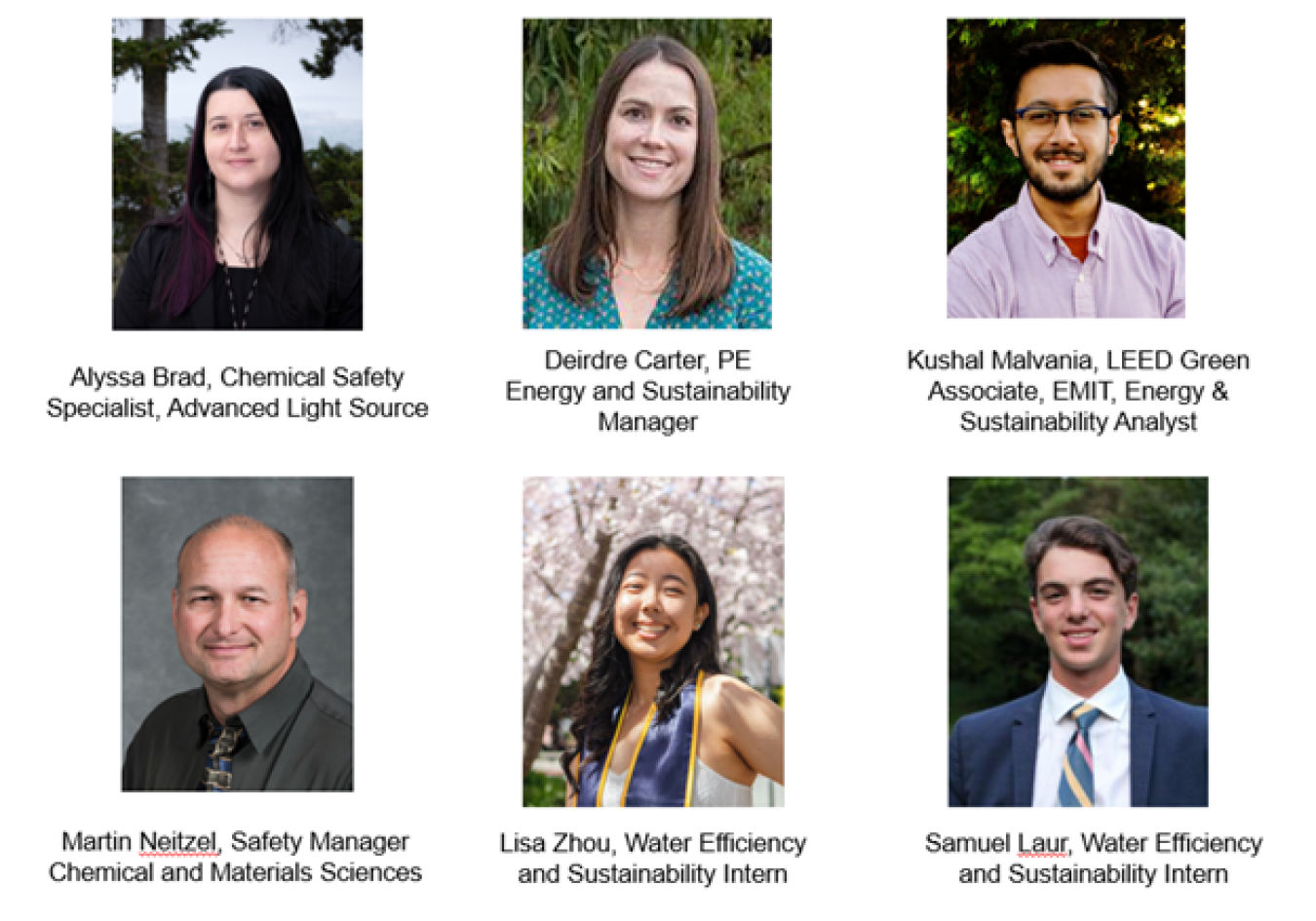 Lawrence Berkeley National Laboratory Project Team
Lawrence Berkeley National Laboratory Project TeamQuantifying Water Consumption in Laboratory Spaces, Lawrence Berkeley National Laboratory
The Lawrence Berkeley National Laboratory project to survey and quantify water-using laboratory equipment demonstrated remarkable commitment to improving sustainability within the laboratory environment, addressing critical aspects such as water efficiency and equipment usage. It showcased innovative data collection methods through a custom mobile application, allowing for the rapid and comprehensive assessment of over 4,000 pieces of laboratory equipment. Lawrence Berkeley’s dedication to this initiative resulted in the quantification of 2.5 million gallons per year of water consumption, contributing significantly to their understanding of resource usage. Moreover, the project’s emphasis on data visualization and best practices not only streamlines internal processes but also has the potential to serve as a replicable model for other institutions. By revealing previously unknown data about water usage, the project had a tangible impact on reducing waste and improving the laboratory’s sustainability profile. Lawrence Berkeley’s commitment to sustainability, demonstrated through this project’s successful execution, is a testament to their dedication to advancing environmental responsibility and resource efficiency.
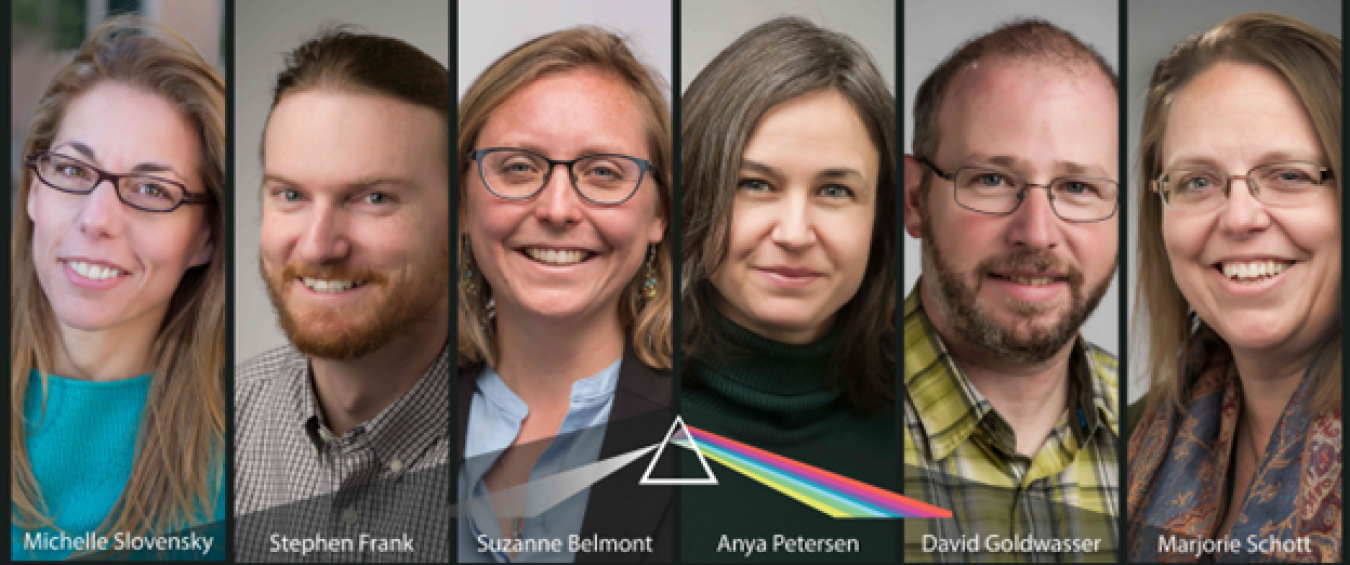 National Renewable Energy Laboratory Project Team
National Renewable Energy Laboratory Project TeamDigital Twin Platform ‘PRISM’, National Renewable Energy Laboratory – Honorable Mention
The National Renewable Energy Laboratory’s Intelligent Campus Team implemented an innovative digital twin platform, known as PRISM, to inform strategic decarbonization investments on NREL’s campuses. In FY22, the team began the development of a multi-phase effort for the creation of PRISM by mapping the physical world of South Table Mountain and the Flatirons Campus to a virtual environment. PRISM aids in strategic decision making and supports future campus expansion, additional renewable assets, and capital projects within a changing regulatory climate. This platform integrates the dynamic and static facilities and infrastructure data that was mapped to optimize performance, achieve net zero emissions, prioritize de-risk investment, and position for resilience readiness. PRISM has informed decarbonization investments, scoping of ESPC projects, envisioning of a fully electrified central plant, and planning for real-time validation of 24/7 carbon pollution-free electricity. PRISM advances DOE’s priority objective for the functionality and expansion of Artificial Intelligence for Operations.
Sustainable High Performance Computing/Data Center awards recognize projects with a significant impact on sustainability efforts in high performance computing (HPC) or data centers. Impacts may include energy or water savings, recycling or purchasing efficient hardware, or initiatives to increase resilience.
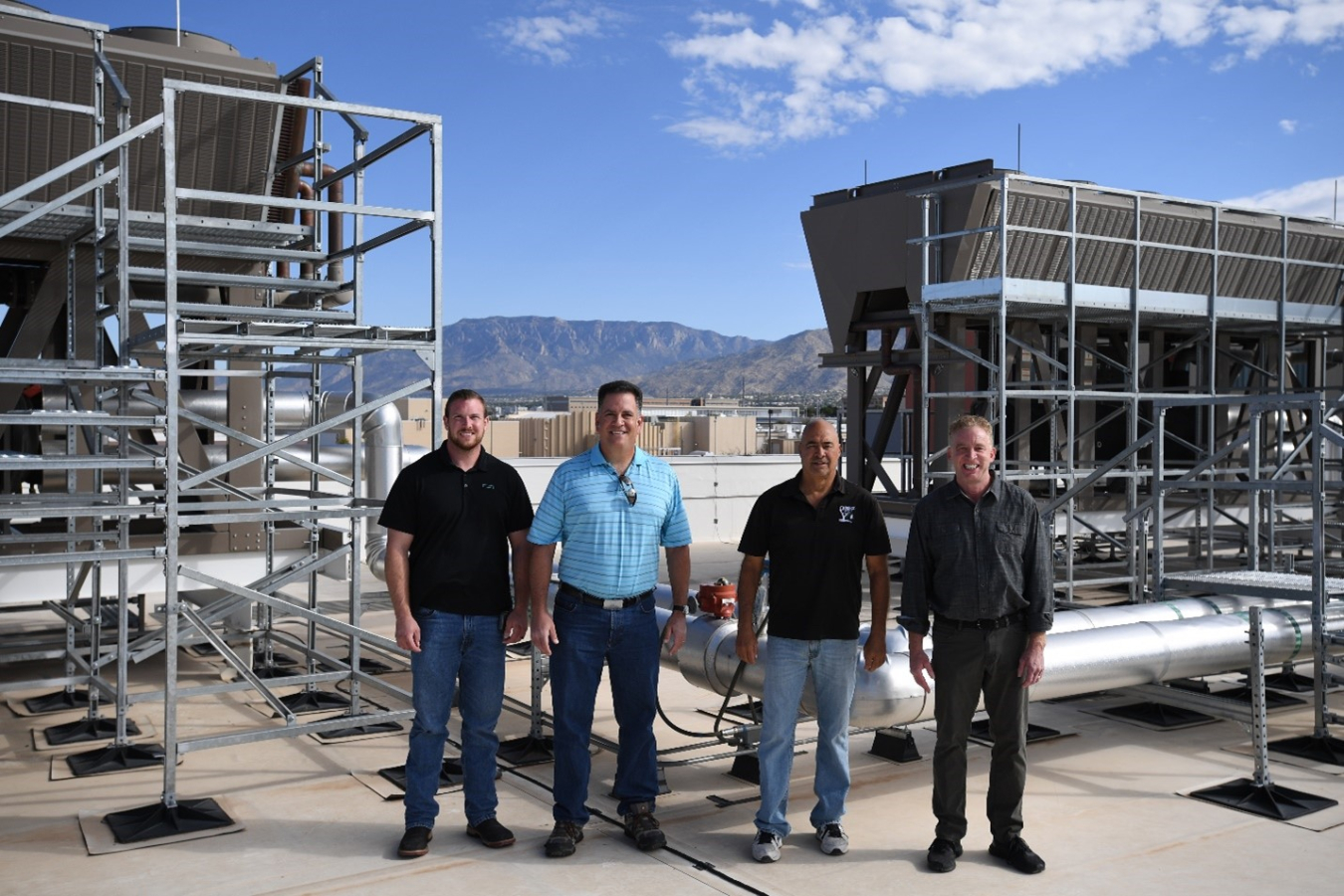 Sandia National Laboratory
Sandia National LaboratoryResource Efficient HPC Facility – 725E, Sandia National Laboratories
Sandia National Laboratories' Resource Efficient HPC Facility team collaborated with Sandia Facilities to embark on a construction project aimed at achieving energy, water, and infrastructure savings while prioritizing sustainability. The 725E facility was successfully built with its planned sustainability attributes and managed to obtain LEED Gold certification. This facility exemplifies the work performed in the 50+year old Annex Enterprise Data Center, but operates with significant energy and water savings, while providing support to other facilities. Within the past year, approximately nine million gallons of water and hundreds of gallons of chemical treatments and disposal have been mitigated through the addition of four novel “thermosyphon” data center cooling systems. With significant energy efficiency gains over the old building, the entire facility runs on 10% less power than the computer systems it houses, which has contributed to at least 30 million kilowatt hours of energy reduction annually.

